Chris is a gardening writer and nature enthusiast. He graduated from Oxford Brookes University in 2022 with an MA in Psychology. Chris works with the Leeds Green Action Society, helping their food cooperative by growing various fruit and vegetables on their two allotments in Hyde Park, Leeds.
Reviewed By ROY NICOL

Roy is a Professional Gardener and Horticultural Consultant, specialising in large garden year-round maintenance and garden development. He is an RHS Master of Horticulture and uses his research in the application of no-dig methods in ornamental garden settings. Roy has been a Professional Gardener for more than six years and is a member of the Chartered Institute of Horticulture, Professional Gardener's Guild and Association of Professional Landscapers (Professional Gardener).
Contributions From SARAH GERRARD-JONES

Known online as 'The Plant Rescuer' and having published a book with the same name, Sarah is a houseplant enthusiast with a passion and skill for reviving imperfect plants. She has an online following of almost 300,000 people and won a Gold Medal at the 2022 RHS Chelsea Flower Show.

Jane Perrone is a Journalist turned Houseplant Expert who has over 25 years of experience. Jane published a book on Houseplants at the start of 2023 and is the founder of On The Ledge podcast, with more than 250 episodes to date. She is a member of the RHS Advisory Committee on Houseplants.
Whether it’s growing your own fruit and vegetables, making your own compost, or upcycling old household items to use as containers for growing – many gardeners nowadays are trying to become more self-sufficient, no longer wanting to rely on shop-bought products.
As peat-based products are not sustainable and alternatives offered can be variable in terms of nutrient provision and even at times include herbicides in error, needless to say, a lot of gardeners are also opting to make their own potting mix.
It’s not as difficult as you would imagine, and can be a real money saver.

There are many more benefits that come with making your own potting soil including the fact that you know exactly what nutrients are in your soil, and you can tailor it perfectly to the plants you are working with.
It also means you can be sure that you aren’t accidentally exposing your plants to any nasty herbicides or pesticides.
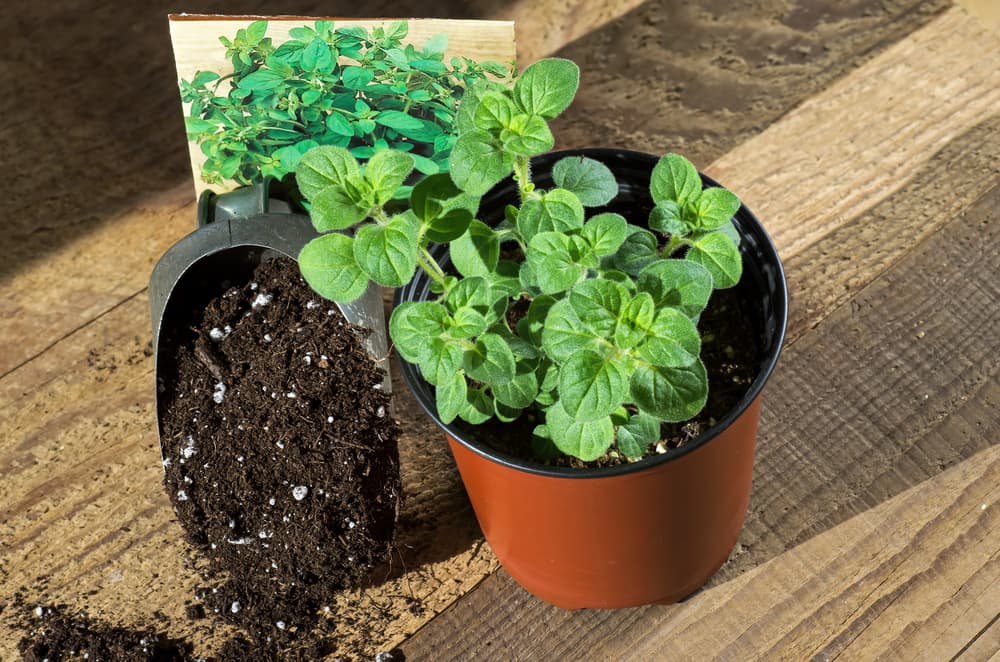
So, if you’re eager to start making your own DIY potting soil, then this article will tell you everything you need to know to get started.
We’ll also introduce the best potting soil recipes for your garden.
What Is Potting Soil?
Well, first things first, potting soil doesn’t actually contain any “soil” whatsoever and is, in fact, a soil-free mix historically commonly containing peat moss, but now has peat-free alternatives such as coir.
“The exception to this is the John Innes formulae for compost mixes, which are soil-based using sterilised loam, a peat substitute and sand,” says Master Horticulturist Roy Nicol.
“These range from ericaceous compost for acid-loving plants, seed-sowing compost and three different types of potting-on compost and have different amounts of limestone and fertiliser.”
Additional ingredients may include composted bark, sand, vermiculite, perlite and other added nutrients.

Essentially, potting soil is a medium in which to grow plants, herbs, fruit and vegetables in pots or other containers.
The perfect potting soil should be made from well-draining, porous materials between one-sixteenth and an inch in size.
If the particles are too small, then the potting soil will not drain, whilst a potting soil containing particles that are too large will be unable to retain water.
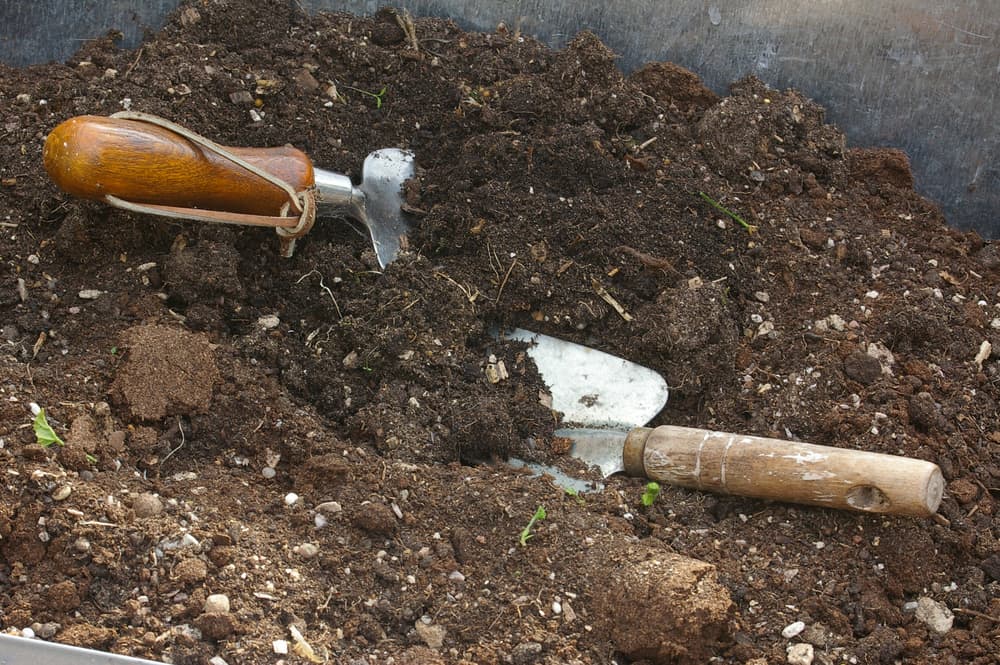
The aim of the game is this: when you are watering your potted or container plants, the water should easily penetrate the potting soil, and any excess water should quickly and easily drain out.
Your DIY potting soil should be consistent, lightweight, and easy to handle.
As mentioned, you can tailor your potting soil to the precise needs of your plants by creating your own unique blends –
- If you are starting seeds or root cuttings, you will want to create a lighter, finer-textured mix.
- For shrubs and trees, you will require a mix that consists of a high level of coarse sand or bark.
- If you are growing succulents or cacti, then you will want to opt for a sandy and gravelly texture.
- When it comes to growing containers of annuals, perennials, vegetables or tropicals, then a general, all-purpose potting mix is ideal.
Key Ingredients For Potting Soil
Before you start creating your own DIY potting soil, it’s essential to familiarise yourself with the key ingredients that you will be working with and what part they play.
1) Sphagnum Peat Moss
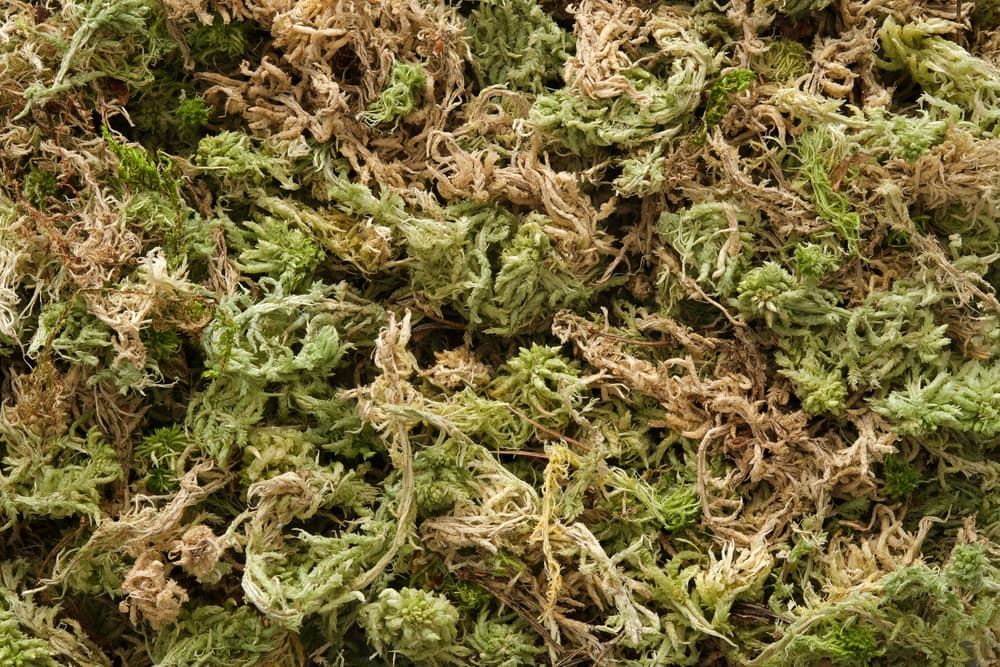
Sphagnum peat moss is a coarse, stable material that takes a long time to break down.
Lightweight and inexpensive, it’s used to bulk up your mixture and also holds water well.
You will want to take care not to add too much Sphagnum peat moss as this can slow or even stop drainage.
It is also harmful to the environment, so we would recommend seeking alternative materials where possible.
It also does not contain a lot of nutrients and has an acidic pH; you can add limestone to balance this.
“As peat-based compost will no longer be sold in the UK from 2024, I’d recommend that you start to use alternatives now to become accustomed to the different watering and feeding regimes that are needed for peat-free compost mixes,” suggests Roy.
2) Coir Fibre

Coir or coconut fibre is a natural fibre extracted from the husk of the coconut.
You will often see it used in brushes, doormats, and floor mats.
Coir is an excellent alternative to sphagnum peat moss, because it contains more nutrients and lasts longer.
It is more expensive to purchase, but many gardeners feel it is a lot more sustainable.
3) Sand
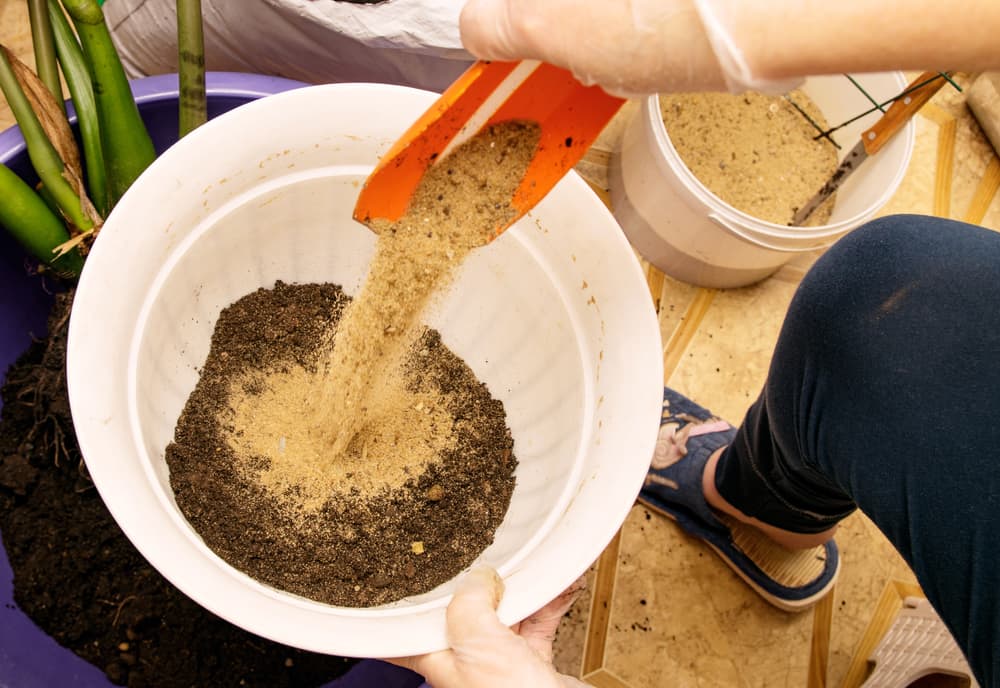
Sand is a core ingredient in potting soil, and we recommend using sharp sand which is coarse and sharp and enhances drainage and aeration as well as adding weight to the mix.
“Builders sand is best avoided as it generally contains lime and is not as coarse as sharp sand and can therefore clog up potting mixes with its finer particles,” Roy adds.
Do take care not to go overboard on the sand as this can make the containers too heavy to move.
4) Perlite
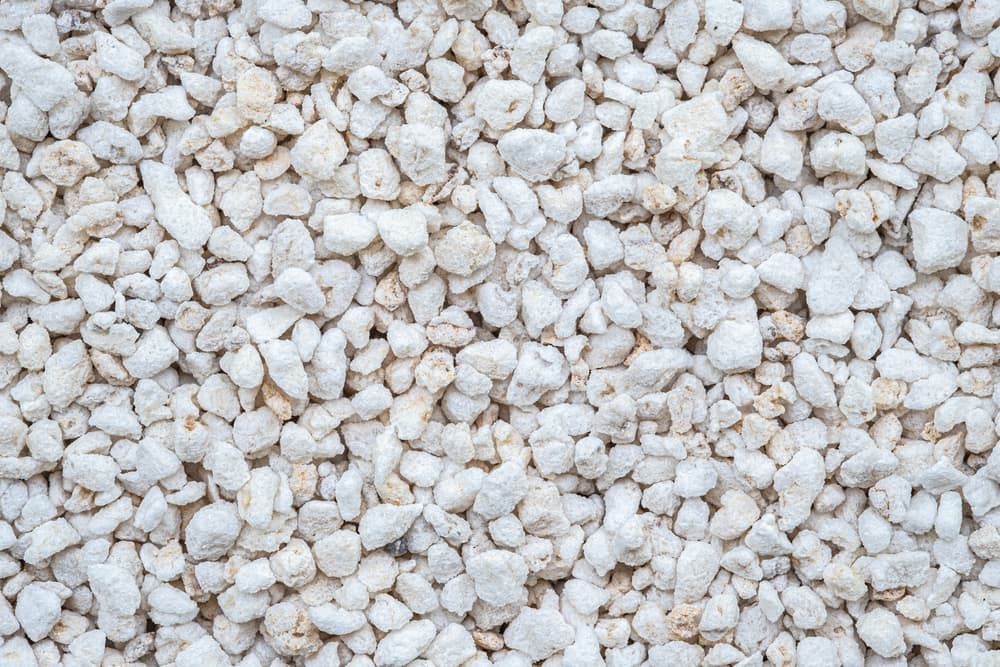
Perlite is mined, expanded volcanic glass that has the appearance of white Styrofoam balls.
Lightweight and sterile, perlite can hold up to four times its weight in water and is excellent for improving drainage.
It is more expensive than sand, but its qualities may make it worth the extra expense.
“Most tropical houseplants require free-draining substrate and an easy way to achieve this is by adding some orchid bark and perlite to the potting compost,” shares Sarah Gerrard-Jones, Horticultural Author and Blogger.
5) Vermiculite
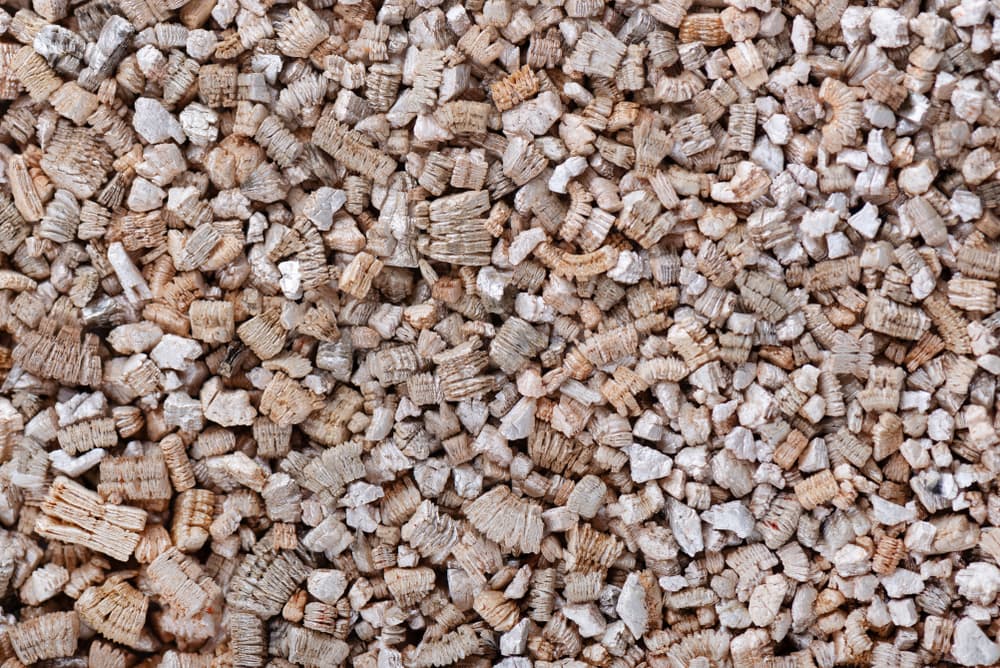
Vermiculite is an excellent alternative to perlite.
It is a mined mineral which is then conditioned with heat which causes it to expand into light particles.
Vermiculite increases the porosity of your potting soil, providing magnesium and calcium and increasing the water-holding capacity of your mix.1Cation Exchange Capacity in Vermiculite. (2021, March 30). Dicalite Management Group. Retrieved March 14, 2023, from https://www.dicalite.com/2021/03/cation-exchange-capacity-vermiculite/
6) Fertilisers
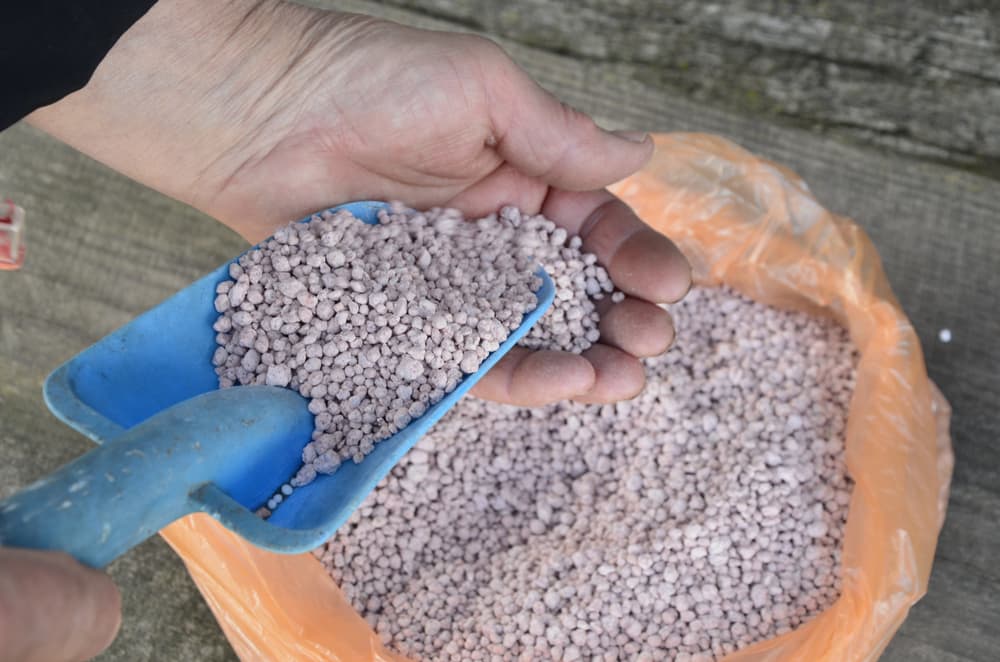
You will need to add fertilisers to your peat-based DIY potting soil as the mix won’t naturally contain enough nutrients to support good plant growth.
Stay away from synthetic fertilisers and instead opt for a natural fertiliser combining plant materials or animal by-products such as manure.
7) Limestone

As mentioned, adding limestone can help balance the pH levels in your potting soil.
We recommend using about a quarter of a cup per every six gallons of peat-based potting soil.
8) Garden Compost

Homemade garden compost is a wonderful addition to your DIY potting soil.
It has an excellent capacity for holding water and is high in nutrients.
Including compost can play an instrumental role in promoting healthy plant growth – that said, we don’t advise using it for containers where you are seed-starting as it can be too heavy and prevent good growth.
9) Composted Woodchips

By introducing composted woodchips to your homemade potting soil, you will increase the pore sizes, allowing for better water and airflow.
It is imperative to note that, although the woodchips are slow to breakdown, they can decrease the nitrogen within the potting soil and we therefore recommend supplementing with blood meal or alfalfa meal.
Composted woodchips are an ideal ingredient for growing shrubs and perennials.
Once you have purchased the woodchips, you will want to allow them to compost for a year and you should be turning the pile at least every three weeks.
Alternatively, composted bark can be purchased separately and used immediately in potting mixes.
DIY Potting Soil Recipes For Growing
Now that you have an understanding of what potting soil is and have familiarised yourself with the ingredients needed to create it, it’s time to start mixing!
We have picked out the best DIY recipes to help you make the perfect potting soils for your needs.

Making your own potting soil isn’t difficult and, as you come to understand it better, you will be able to manufacture whatever type you require for your pot plant growing needs.
“You need to think about what kind of plant you’re growing, whether it’s a houseplant or a succulent, and where it is native to,” shares Houseplant Expert Jane Perrone.
“If it’s coming from a free-draining place, you’ll need to add lots of drainage material. There are so many things you can use for this, like perlite, grit and horticultural sand, as mentioned above.”
You can use a wheelbarrow to mix your blends, or if you want to make blends in bulk, you could also use a compost tumbler or even a cement mixer.
1) For Annuals, Perennials, Fruit & Veg
- 6 parts coir
- 4 and ½ parts perlite
- 6 parts garden compost or composted bark
- 300g of organic fertiliser per 75 litres of potting mix
2) For Seed Starting
- 3 parts coir
- 1 part perlite
- 1 part vermiculite
- 2 parts sharp sand
3) For Shrubs & Trees
- 3 parts coir
- 3 parts garden compost
- 2 and ½ parts sharp sand
- 3 parts perlite
- 2 and ½ parts composted bark (pine bark can be substituted for shrubs and trees that require additional acidity)
- 200g organic fertiliser per 64 litres of potting mix
4) For Pot Plants
- 2 parts coir
- 1 and ½ parts perlite
- 2 parts sharp sand
- 28g of organic fertiliser per 25 litres of potting mix
5) For Cacti Or Succulents
- 3 parts coir
- 1 part perlite
- 1 part vermiculite
Go Potty For DIY Potting Soil
Hopefully, this article has left you brimming with confidence to make your own DIY potting soil.
The wonderful thing about it is that, once you get into it, you can really change and adapt your own potting soil brand to perfectly suit the plants you are keen to grow.

Learning to make your own potting soil will teach you so much about your potted plants, flowers, shrubs and trees and will give you a real understanding of their specific, individual needs.
Don’t be afraid to use a little trial and error; this is a rewarding process and will lead you to feeling like a much more confident and well-rounded gardener.
So go ahead and get mixing the perfect DIY potting soil for your potted plants.
References
- 1Cation Exchange Capacity in Vermiculite. (2021, March 30). Dicalite Management Group. Retrieved March 14, 2023, from https://www.dicalite.com/2021/03/cation-exchange-capacity-vermiculite/

